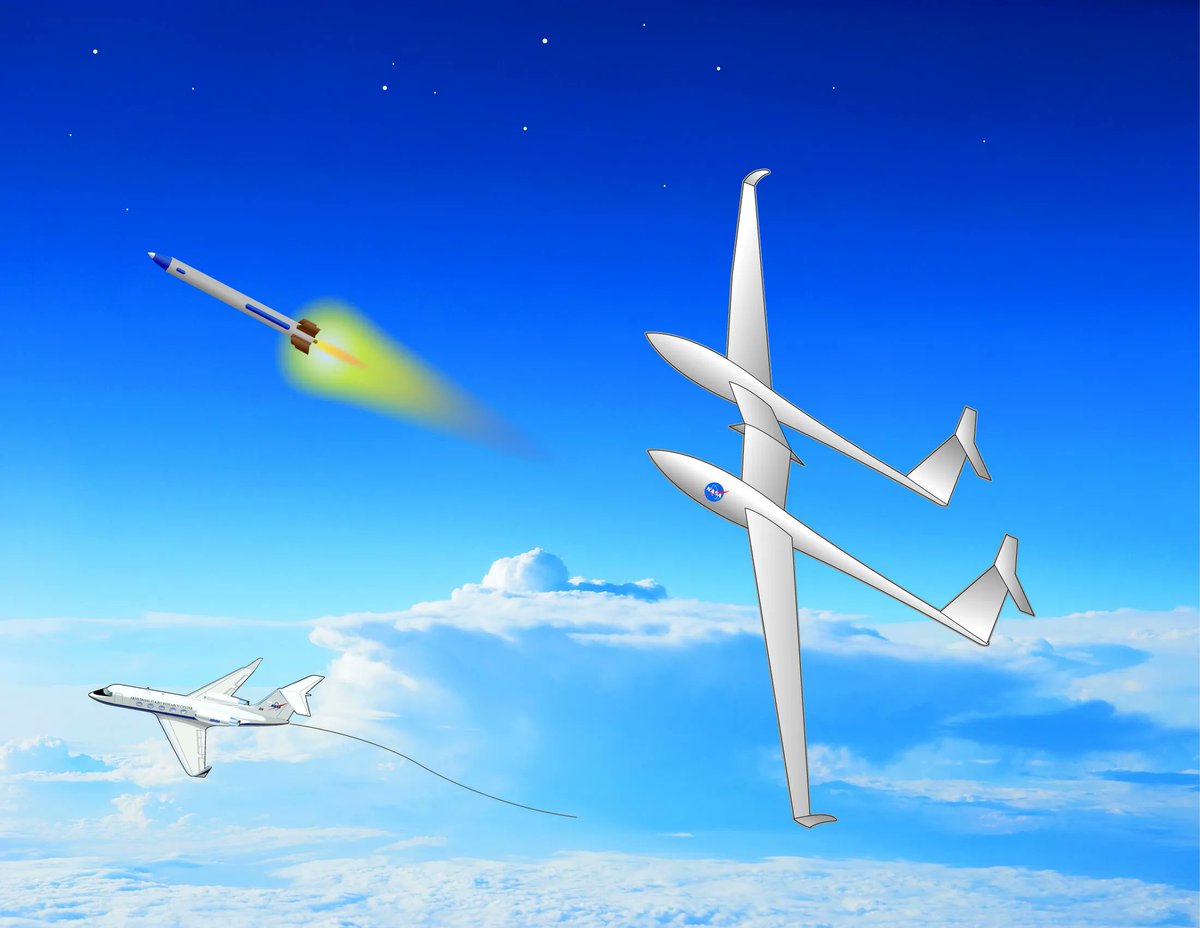Getting to space has almost always been a multi-stage process. Those stages typically took the form of different stages of chemical rockets, but it doesn’t have to be that way. Plenty of alternative options have been proposed, and one that NASA has been working on for almost a decade is getting closer to commercialization. The project, known as the Towed-Glider Air Launch System (TGALS), uses three very different stages – a business jet, and glider, and two separate rockets – sort of. But its main advantage means that any airport large enough to host a business jet could also become a spaceport.
That’s a tempting proposition, as spaceport access is relatively limited. Few launch pads can support chemical rockets, such as those traditionally used in space launch systems. Most of those ports are dominated by giants of the industry – ULA and SpaceX own a combined six, which make up a large portion of privately operable spaceports in the US.
The prospect of opening up some of the 5,000 public airports for use as space launch sites is therefore tempting. To make that happen, though, a company can’t use standard chemical rockets. So why not use a plane? Or a glider? Or, better yet, both?
TGALS, developed at the Armstrong Flight Research Center in California, is indeed both – a business class jet that pulls a specially designed glider behind it for take-off and takes that glider up to about 12 km altitude. At that point, the glider disconnects from the plane. The jet then returns to the airfield.
After separating from the airplane, the glider is no longer a glider, as it uses a small rocket engine to angle itself upward. Upon reaching a reasonable angle, a full-blown chemical rocket is released from the glider’s underbelly and starts its own orbital burn. The glider, which is unmanned, is then guided back to the airfield it left from, ready for another go. The rocket itself isn’t reusable, but it is a relatively small cost of the overall system.
Another attraction of that system is that it could lower the cost of getting to orbit for relatively small payloads by around 40% since both the glider and business jet are reusable. Additionally, there aren’t any potentially explodable rockets anywhere near an aircraft with a human in it. In effect, if the glider or its rocket payload explodes in midair, the business jet towing it along, which has actual pilots in it, will most likely be fine.
NASA originally released some promotional material for the system back in 2015 and has been slowly making progress on it for the past seven years, going so far as to launch a scale model of the system recently. In addition, it has garnered some commercial interest from a company called Fenix Space, also located in California, but they are currently seeking out more partners to help commercialize the system.
They might even be able to look “internally” – or at least to another part of the federal government. The Department of Defense has a long-running hypersonic test program, which TGALS might be able to integrate well with. Instead of tracking hypersonic missiles using a system of Global Hawk aircraft, the TGALS system could provide gliders that could deliver the same sort of telemetry data needed to conduct hypersonic research effectively.
Overall there’s lots of promise for this technology, but it will face plenty of competition. A similar system has already put some astronauts up to suborbital altitudes with Spaceship Two. The looming launch of Starship and other heavy launch vehicles could also put a dent in the commercial prospects of a somewhat cheaper launch system. But none of those new heavy lifters will be able to take off from a regular airport.
Learn More:
NASA – NASA Armstrong Develops Tech to Bring Space Launch to Any Airport
NASA – TGALS
UT – ‘Mystery-Missile’ – Likely an Airplane
UT – The World’s Biggest Aircraft – the Rocket-Launching Stratolaunch – Completes its First Test Flight
Lead Image:
Artist’s depiction of a TGALS launch
Credit – NASA

